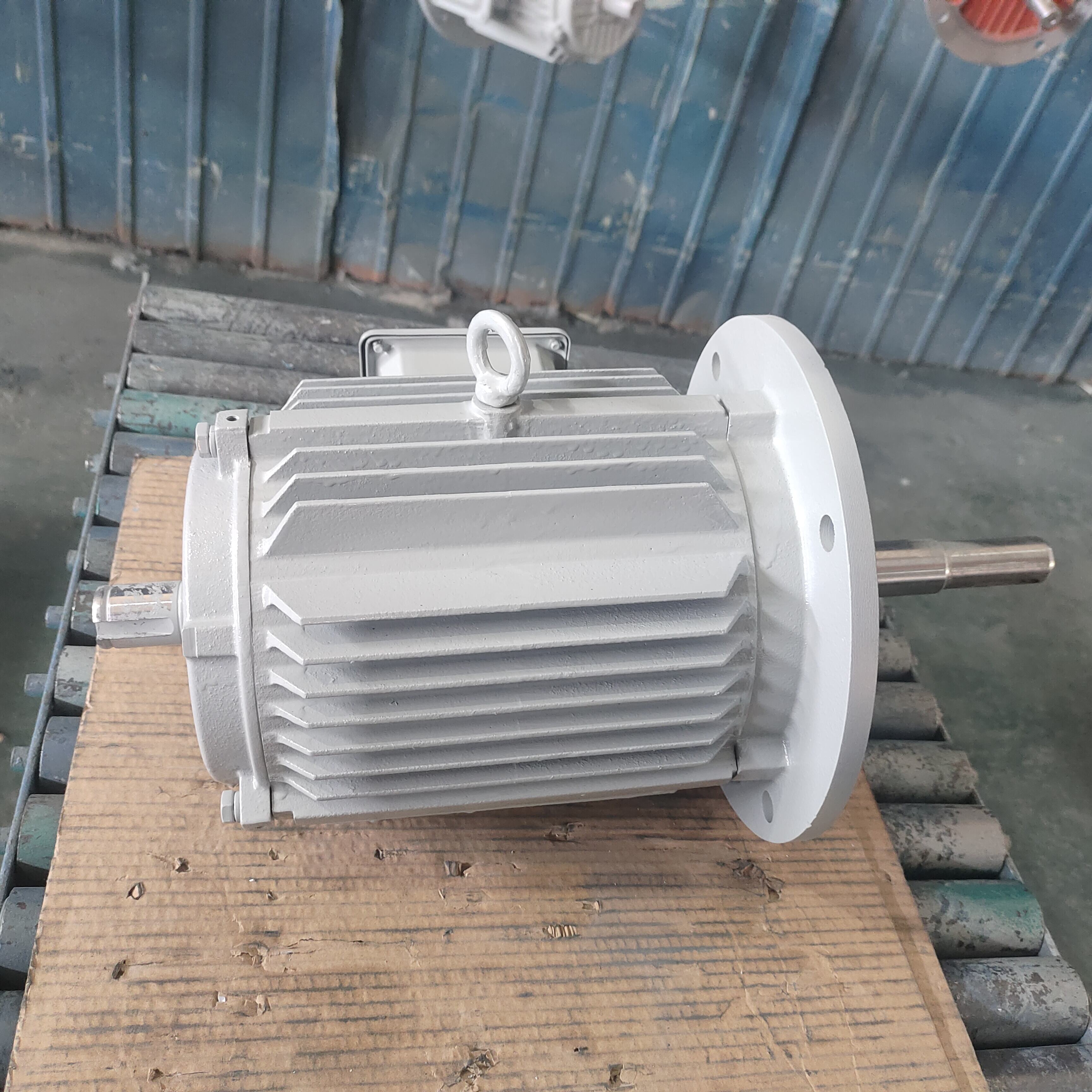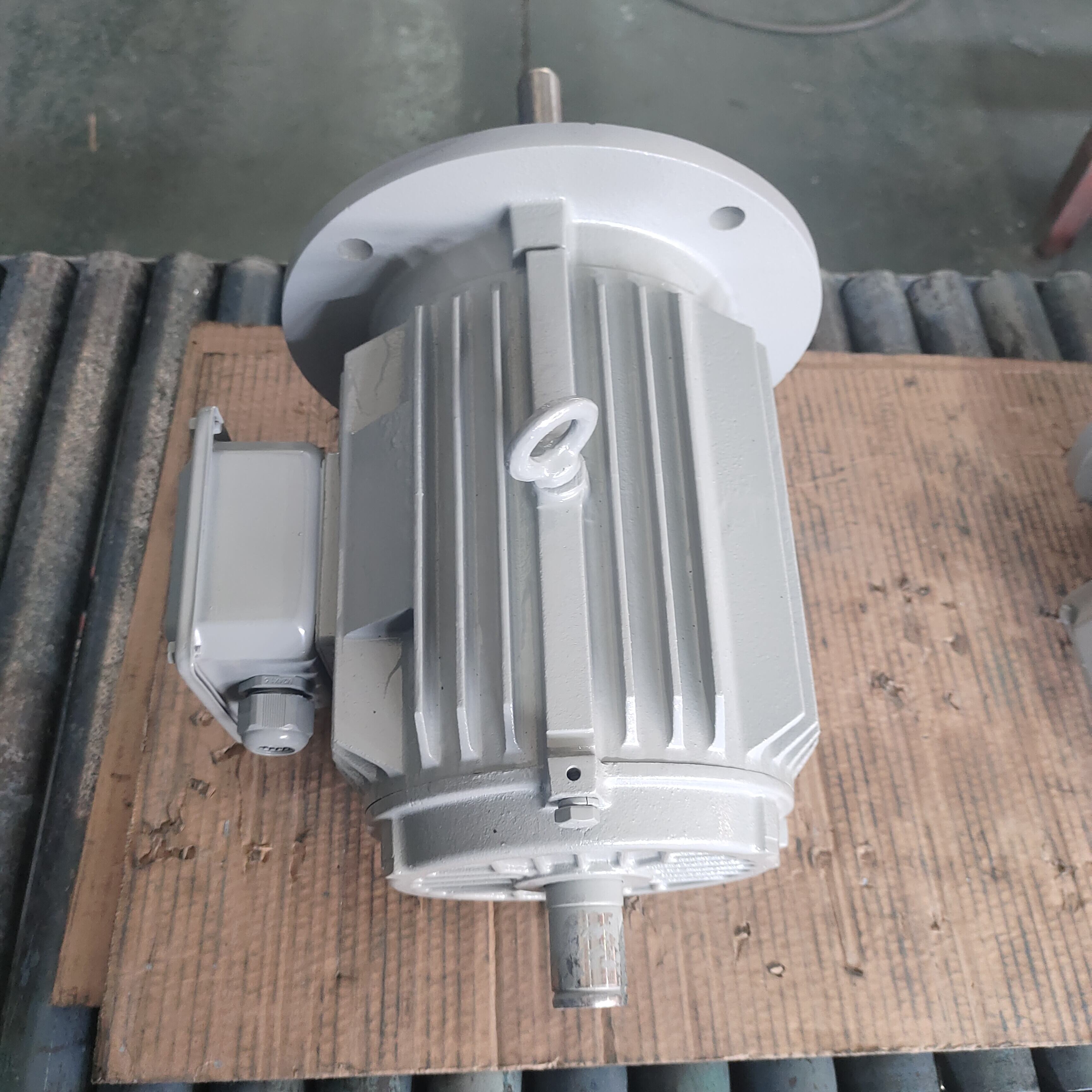What Is an Integrated Motor?
Core Definition and Concept
Integrated motors basically combine everything needed in one package motor, control systems, and feedback all packed together in a single unit. What this means is smaller equipment footprint and much simpler installation process compared to traditional setups. The whole idea behind these motors shows real progress in electro mechanical tech, opening doors for smarter applications throughout different industrial fields. When manufacturers merge several functions into a single housing, they get rid of those old days where separate components were necessary for each function. Take manufacturing plants for instance these days, integrated motors help run operations more intelligently while making things work faster and with better accuracy than ever before.
Evolution from Traditional Motor Systems
Back in the day, traditional motor systems had all sorts of separate parts like motors, drives, and controllers, leading to complicated wiring setups and big bulky designs. Integrated motors represent a major change in how things work today, thanks to better electronics and new materials that make everything much simpler. When manufacturers put all those components together in one unit, they get better performance while making installations far less complicated. Industry reports indicate installation times drop around 40% when switching to integrated motors, something that's changing how factories operate on a daily basis. What we're seeing now isn't just about better tech it's actually transforming how companies think about efficiency and costs across various motor applications in real world settings.
How an Integrated Motor Works
Control Signal Processing
Integrated motors handle control signals pretty well thanks to some smart algorithms that let them make adjustments on the fly. What makes these motors stand out is their ability to adapt responses based on what's actually needed during operation, which means movements stay accurate even when conditions change. Take manufacturing plants for instance where robots need to pick up parts at different angles or conveyor belts must adjust speed depending on load weight. These kinds of precise operations matter a lot in places like robotic assembly lines and automated warehouses. Getting things right down to millimeters helps keep production running smoothly without wasting time or materials, ultimately boosting both output quality and factory throughput rates across various sectors.
Internal Drive Functionality
Integrated motors work their magic through internal drive systems that turn electricity into motion via electromagnetic forces. These motors cut down on wasted energy pretty well, which means they run systems more efficiently no matter what kind of workload they face day to day. When factories look at their bottom line, these efficiency gains translate directly into real money saved over time. That's why so many manufacturing plants, especially those dealing with heavy machinery or continuous production lines, have switched to integrated motor solutions recently. The combination of lower power consumption and reliable performance makes them stand out among traditional motor options for plant managers watching both energy bills and equipment downtime.

Closed-Loop Feedback Mechanisms
Integrated motors with closed loop feedback systems use built in sensors that constantly tweak performance according to what's happening right now. The tech really makes a difference when it comes to control and accuracy something that matters a lot for machines that need to be precise down to the millimeter. These motors keep checking their own performance all the time, which means they can react faster to changes. That kind of responsiveness leads to better safety records and fewer breakdowns especially in tough industrial settings where mistakes can cost thousands. Most manufacturers report at least 15% improvement in operational reliability after switching to this type of system.
Key Components of Integrated Motors
Built-in Driver and Controller Unit
Integrated motors with built-in driver and controller units make life much easier during installation since they eliminate the hassle of dealing with extra parts and all those wires running everywhere. What these internal components do is cut down on complicated control systems while making it simpler to manage how the motor actually works day to day. When everything lives inside the motor housing itself, diagnosing problems becomes way faster too. Technicians can spot issues quicker without having to chase down separate components scattered throughout the facility. The whole package ends up being smaller than traditional setups and holds up better under tough conditions found in factories and manufacturing plants across different industries.
Motor Stator and Rotor Integration
Putting together the stator and rotor in one package represents a major advancement in how these integrated motors work. When these components are combined, there's less energy wasted because the air gaps between them shrink down significantly. And guess what? That means better torque output overall. Motors built this way last longer too since there's less physical wear happening inside. For applications that need top notch performance, like when every fraction of a second matters, this design really shines. Plus, the whole thing takes up less space while still handling tough operating environments. No wonder manufacturers across sectors from factory automation to robotic systems are increasingly turning to this compact solution for their power needs.
Embedded Sensors for Real-Time Feedback
Putting sensors inside integrated motors makes all the difference when it comes to getting instant feedback. These little devices keep track of important stuff like how hot things get, what speed they're running at, and how much weight they're handling. The information flows non-stop into maintenance systems, so plant managers know exactly when something might go wrong before it actually breaks down. That means fewer production stoppages and longer life for expensive machinery. When manufacturers install these sensors right from the start, the motors themselves can tweak their performance as conditions change throughout the day. For factories dealing with tight tolerances in manufacturing processes, this kind of smart adjustment really matters. We've seen plants cut maintenance costs by almost 30% after implementing sensor technology. While there's still some debate about initial investment costs versus long term savings, most industrial operators agree that having these built-in monitoring capabilities gives them peace of mind and better bottom line results over time.
Advantages of Integrated Motor Systems
Reduced Wiring Complexity
Integrated motors cut down on wiring headaches quite a bit. Their compact design packs all those control components right into the motor housing, so there's no need for bunches of extra wires running everywhere. Installation becomes much simpler when everything fits together neatly like puzzle pieces. The cost savings from easier setup and less maintenance work out pretty well too. When something goes wrong, technicians don't have to chase down dozens of connections anymore. Fixing problems takes less time and frustration. Less complicated setups mean better day-to-day performance for these systems, plus they tend to last longer without breaking down unexpectedly.
Space Optimization in Machinery
Integrated motors have a small footprint that cuts down on wiring mess while making better use of available space inside all sorts of machines and equipment. The fact that they take up less room means factory designers can pack components closer together something that matters a lot in today's manufacturing environments where every square inch counts. When engineers work with these space efficient motors, it opens doors for creative solutions nobody would think possible otherwise. Take robotics assembly lines for instance they need compact components to fit into tight spaces between workstations. That's why so many manufacturers across sectors from automotive production to medical device manufacturing are turning to integrated motor systems when floor space becomes scarce and operational efficiency needs boosting.
Enhanced Energy Efficiency
Integrated motors stand out when it comes to energy efficiency, frequently considered top performers in industrial settings. Most models run at around 90% efficiency or better, which really cuts down on running expenses for factories and plants. What makes these motors special is how they cut power usage without sacrificing performance, something manufacturers love since it helps them meet green targets while keeping production going strong. Companies across various sectors have found that switching to integrated motors pays off in multiple ways. They save money on electricity bills month after month, plus they reduce carbon footprints, which matters increasingly in today's regulatory environment where environmental compliance is becoming non-negotiable for many businesses.
Improved Reliability and Maintenance
Integrated motors tend to last longer and need less upkeep simply because they have fewer parts inside. Their compact construction means breakdowns happen less frequently, making them a must-have for factories running 24/7 operations. Think about what happens when production lines stop suddenly - money just drains away. That's why so many manufacturing plants rely on these motors. Fewer things can go wrong, and when something does need fixing, it takes less time and effort. Operators across different industries appreciate this consistency, especially those working in food processing or pharmaceuticals where even small interruptions can cause major problems down the line.
Common Applications of Integrated Motors
Mobile Robotics (AGVs and AMRs)
Integrated motors have become pretty much indispensable in the world of mobile robotics, especially when talking about things like Automated Guided Vehicles (AGVs) and those newer Autonomous Mobile Robots (AMRs). What makes them so important? Well, they give these machines that extra edge in navigating precisely through warehouses, factories, and other workspaces where accuracy matters. With integrated motors, operators get much finer control over how fast something moves and exactly where it goes. This translates into real gains for logistics companies trying to move goods around efficiently. We've seen warehouses run smoother operations because of this technology, with fewer collisions and better path planning. The bottom line is that these motors aren't just nice to have anymore; they're becoming standard equipment for anyone serious about optimizing their material handling processes.
Industrial Automation and Conveyors
Integrated motors play a vital role in running conveyor systems across industrial automation settings. With their smaller footprint and improved features, these motors keep operations running smoothly while boosting output at factories and processing plants. The fact that they take up less space combined with better performance makes a real difference for logistics teams and overall productivity on shop floors. Manufacturers see tangible advantages when switching to integrated motor solutions. Conveyor belts run with greater efficiency, which means products move through assembly lines faster and with fewer breakdowns during critical production periods.
HVAC and Pumping Systems
Integrated motors show up all over the place in HVAC systems and pumps because they fit into tight spaces while still delivering good efficiency. These motors take up less room than traditional ones, plus they run on less power, so building managers love them for cutting down on energy bills in heating and cooling systems. When installed properly, these motors help buildings save money on electricity without sacrificing comfort levels. That's why many commercial facilities now specify integrated motors when upgrading their climate control equipment or installing new pumping stations throughout the property.
Future Trends in Integrated Motor Technology
Modular and Decentralized Architectures
A really interesting shift we're seeing in motor tech these days centers around modular and decentralized system designs. The beauty of these setups lies in how they let companies build out systems exactly how they need them, scaling up or down depending on what the factory floor demands at any given moment. Modular systems bring something special to the table for manufacturers dealing with all sorts of different production requirements. When parts can plug into each other in multiple ways, factories aren't stuck with one-size-fits-all solutions anymore. They get to fine tune operations for maximum output without wasting resources. And this flexibility matters a lot right now because markets keep changing so fast, and new technologies pop up constantly that traditional setups just can't handle.
Energy Efficiency Standards (IE4+)
Looking ahead, integrated motors are likely going to need to meet much stricter energy efficiency requirements such as IE4+ and even higher standards. This trend shows how important sustainability has become across many industries today. When companies follow these tough new guidelines, they help integrated motors reduce their environmental footprint while also cutting down on those costly industrial running expenses. What makes IE4 so significant is that it actually cuts down on power usage, which plays a big role in making factories and plants more eco-friendly overall. With more and more manufacturers looking for ways to go green without breaking the bank, we're seeing integrated motors that hit these top efficiency marks becoming standard components in all sorts of machinery and production lines.
Permanent Magnet Alternatives
The search for better alternatives to permanent magnets has become really important lately, especially since companies want to cut down expenses while still keeping motor efficiency intact. What researchers are finding might actually change how the whole market works, letting businesses access these motors at lower prices and apply them in all sorts of different industries from manufacturing plants to consumer electronics. These alternative magnets can boost performance metrics, cut back on our dependence on those expensive rare earth elements, plus save money in production costs. If manufacturers manage to get this right, we'll probably see integrated motors popping up everywhere soon. This shift would represent major progress both technically and financially for anyone working in the motor integration field.
Frequently Asked Questions (FAQ)
What are integrated motors used for?
Integrated motors are used in various applications, including mobile robotics, industrial automation, HVAC systems, and pumping applications, where their compact design and improved efficiency are crucial.
How do integrated motors differ from traditional motor systems?
Unlike traditional motor systems that consist of separate components like motors, drives, and controllers, integrated motors combine these functions into a single unit, reducing installation complexity and enhancing performance.
What are the advantages of using integrated motors?
Integrated motors offer reduced wiring complexity, space optimization, enhanced energy efficiency, and improved reliability and maintenance, making them suitable for high-demand industrial environments.


